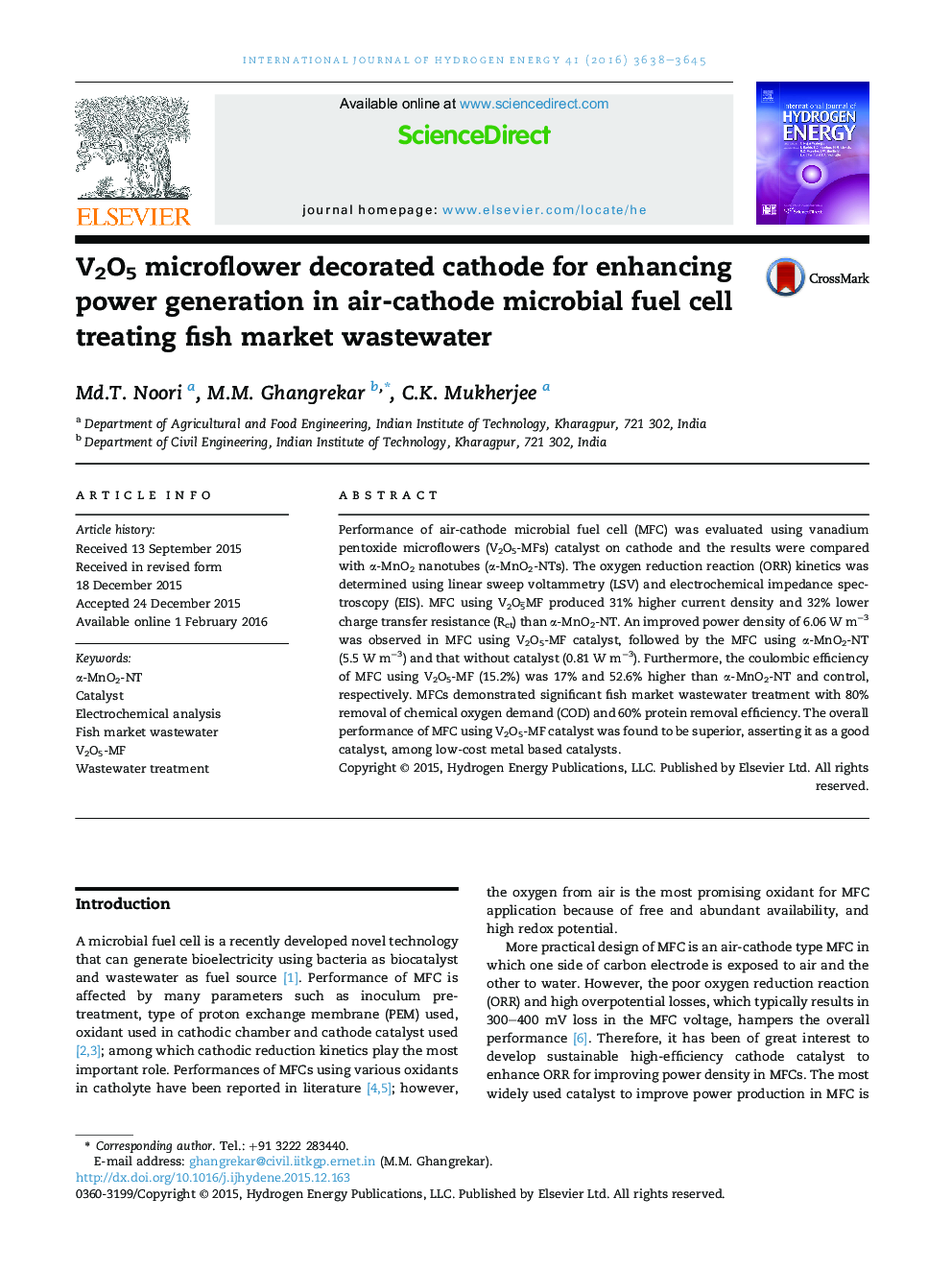| Article ID | Journal | Published Year | Pages | File Type |
|---|---|---|---|---|
| 1270266 | International Journal of Hydrogen Energy | 2016 | 8 Pages |
•V2O5 microflowers were synthesized to be used as a cathode catalyst in MFC.•Electrochemical analysis revealed excellent property of V2O5 for oxygen reduction.•Compared with α-MnO2 nanotube, cathode with V2O5 microflowers performed superior.•MFC gave acceptable organic matter and protein removal from fish market effluent.
Performance of air-cathode microbial fuel cell (MFC) was evaluated using vanadium pentoxide microflowers (V2O5-MFs) catalyst on cathode and the results were compared with α-MnO2 nanotubes (α-MnO2-NTs). The oxygen reduction reaction (ORR) kinetics was determined using linear sweep voltammetry (LSV) and electrochemical impedance spectroscopy (EIS). MFC using V2O5_MF produced 31% higher current density and 32% lower charge transfer resistance (Rct) than α-MnO2-NT. An improved power density of 6.06 W m−3 was observed in MFC using V2O5-MF catalyst, followed by the MFC using α-MnO2-NT (5.5 W m−3) and that without catalyst (0.81 W m−3). Furthermore, the coulombic efficiency of MFC using V2O5-MF (15.2%) was 17% and 52.6% higher than α-MnO2-NT and control, respectively. MFCs demonstrated significant fish market wastewater treatment with 80% removal of chemical oxygen demand (COD) and 60% protein removal efficiency. The overall performance of MFC using V2O5-MF catalyst was found to be superior, asserting it as a good catalyst, among low-cost metal based catalysts.
Graphical abstractFigure optionsDownload full-size imageDownload as PowerPoint slide
